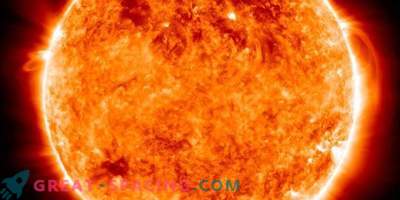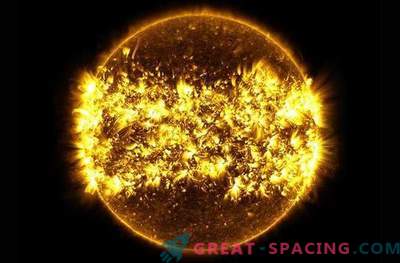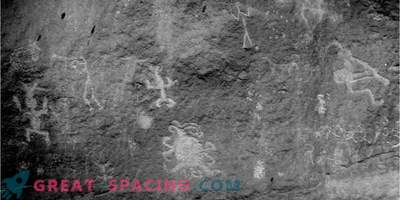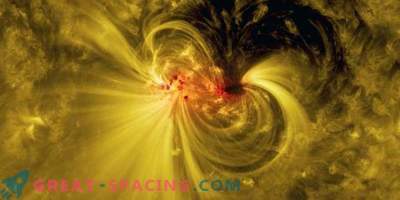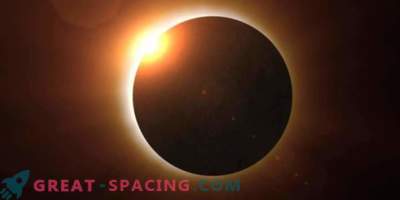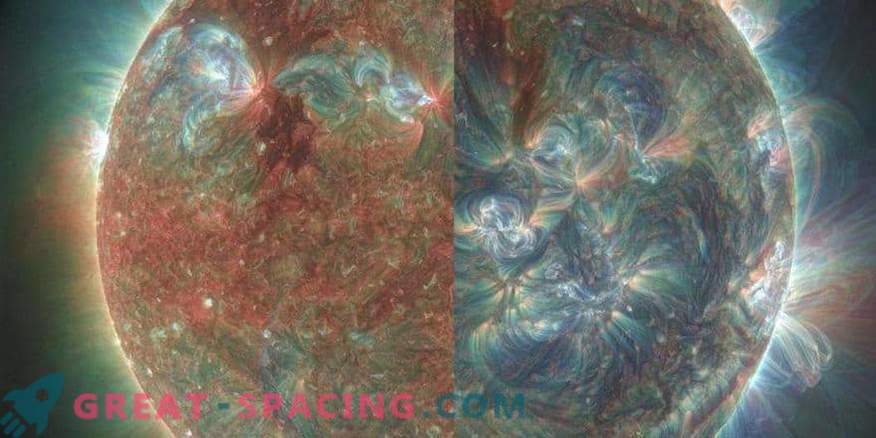
The change of the solar cycle in the solar corona as observed by the Observatory of solar dynamics at the end of the last activity period in May 2010 (left) and the current maximum in December 2014 (right)
Scientists from the University of Aberystwyth decided to study information from the Solar Dynamics Observatory in order to understand the behavior of the corona during the 11-year cycle.
Many modern studies based on the study of the solar corona, cover short-term observations, because of which we can not create a full-fledged picture of the long-term situation on the star. But the researchers decided to study the information from 2010-2017.
It has long been known that the crown goes through cycles that take about 11 years. During this time, the activity of outbreaks increases and decreases. But before it was not possible to understand what exactly is happening on the Sun during this period. Scientists have focused on the quiet crown - this part is in relative calm and devoid of sunspots. They also examined the ultraviolet rays coming from different coronal areas. It turned out that most of the time the quiet corona was preserved with the emission of extreme ultraviolet radiation, and the greatest changeability was observed in the active regions.
Most surprisingly, emissions on the quiet crown and active sites were constant. Following the situation, Hugh Morgan and Yora Taroyan believe that observing sunspots is not enough to predict exposure to extreme ultraviolet radiation and more factors should be identified that have an impact.
